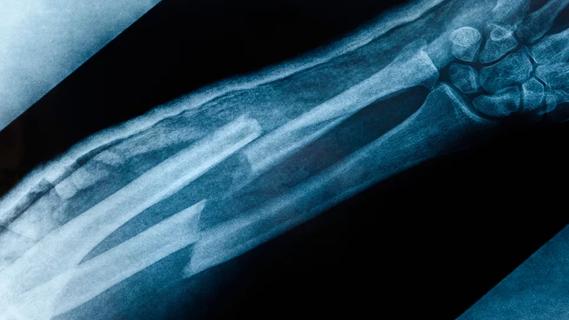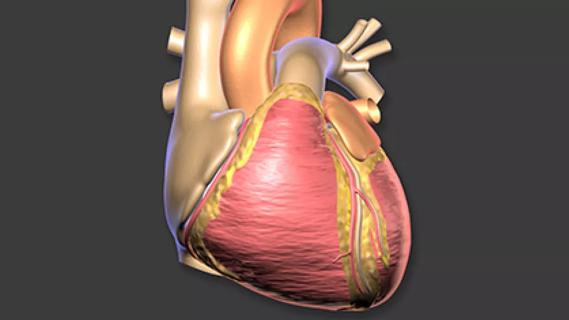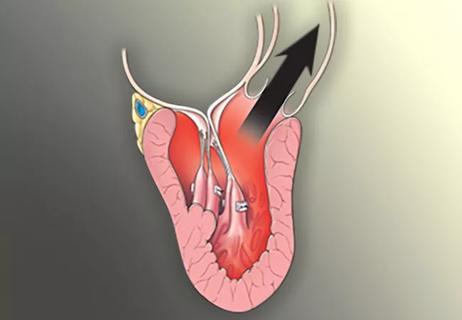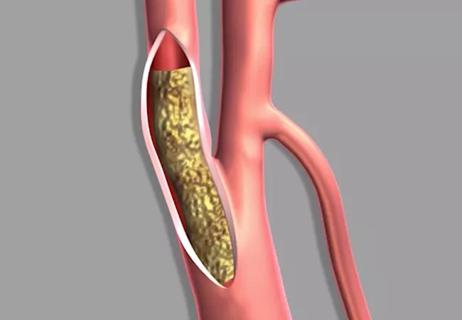Improves long-term mortality when internal thoracic artery graft is used

Internal thoracic artery (ITA) grafting of coronary arteries with angiographically moderate stenosis may improve long-term mortality. So concludes a large analysis of Cleveland Clinic patients presented at the 95th Annual Meeting of the American Association for Thoracic Surgery.
Advertisement
Cleveland Clinic is a non-profit academic medical center. Advertising on our site helps support our mission. We do not endorse non-Cleveland Clinic products or services. Policy
“After placing the left ITA to the left anterior descending coronary artery, surgeons should not hesitate to place the right ITA to the second most important coronary artery, even it it’s only moderately stenosed,” says lead researcher Joseph Sabik, MD, Chairman of Thoracic and Cardiovascular Surgery at Cleveland Clinic.
Dr. Sabik and colleagues reviewed a cohort of 55,567 patients who underwent primary isolated coronary artery bypass grafting (CABG) at Cleveland Clinic from 1972 to 2011. Their aim was to examine whether grafting arteries with only moderate stenosis affected long-term mortality. Among these patients, they identified 8,531 who had a single coronary artery with moderate (50-69 percent) stenosis, which was bypassed in 6,598 patients (77 percent) and not bypassed in 1,933 (23 percent). These patients underwent bypasses to all other coronary arteries with severe (≥ 70 percent) stenosis.
The arterial location of the moderate stenoses was as follows among the 8,531 patients:
Moderately stenosed coronary arteries were grafted with saphenous veins in 4,625 patients (70 percent) and with ITA grafts in 1,806 patients (27 percent).
The mean follow-up for all-cause mortality was 13 ± 9.7 years.
Unadjusted survival was comparable for patients with and without a graft to the moderately stenosed artery at all time points (1, 5, 10, 20 and 30 years) regardless of whether a saphenous vein or ITA graft was used.
Advertisement
After multivariate adjustment for patient characteristics, survival remained similar between patients with saphenous vein grafting and those with non-grafting of the moderately stenosed artery. However, ITA grafting was associated with a statistically significant 22 percent reduction in long-term mortality compared with non-grafting of the moderately stenosed artery (hazard ratio = 0.78; P < .0001).
The finding of reduced mortality with ITA grafting contrasts with the fact that stenting coronary arteries with non–ischemia-producing stenosis produces worse outcomes than leaving them unstented, Dr. Sabik and colleagues noted. They speculate that fundamental differences between revascularization achieved by percutaneous coronary intervention (PCI) and CABG may explain these contrasting findings.
“Stenting a non–ischemia-producing moderate lesion increases the chance of an adverse event from thrombosis or restenosis related to stent placement, whereas grafting a moderate lesion may lead only to graft closure, with no resultant harm to the patient,” says Dr. Sabik.
He notes that while PCI relies on the coronary artery remaining patent distal to the stent, any new events that occur after one year do so almost exclusively in segments other than the stented lesion. “In contrast, CABG restores blood flow to the distal coronary artery and enables it to remain independent of proximal plaque rupture that may occur,” he explains.
“It is important to note that moderate lesions tend to be the culprits, because their acute thrombosis can lead to myocardial infarction,” he adds. “Therefore, a patent graft to a moderately stenosed coronary artery might be protective in the long run.”
Advertisement
Advertisement

Surprise findings argue for caution about testosterone use in men at risk for fracture

Findings support emphasis on markers of frailty related to, but not dependent on, age
![GettyImages-1252287413 [Converted]](https://assets.clevelandclinic.org/transform/StoryPanel/350804b2-f1e4-4d97-a277-9629cf45af3e/23-HVI-4120348_redlining_650x450_jpg?w=3840&q=75)
Large database study reveals lingering health consequences of decades-old discrimination

Additional analyses of the two trials presented at 2023 ESC Congress

Prospective SPIRIT-HCM trial demonstrates broad gains over 12-month follow-up

An ACC committee issues recommendations to accelerate sluggish progress

Review of our recent experience shows it’s still a safe option

Machine learning may improve risk prediction and guide therapy